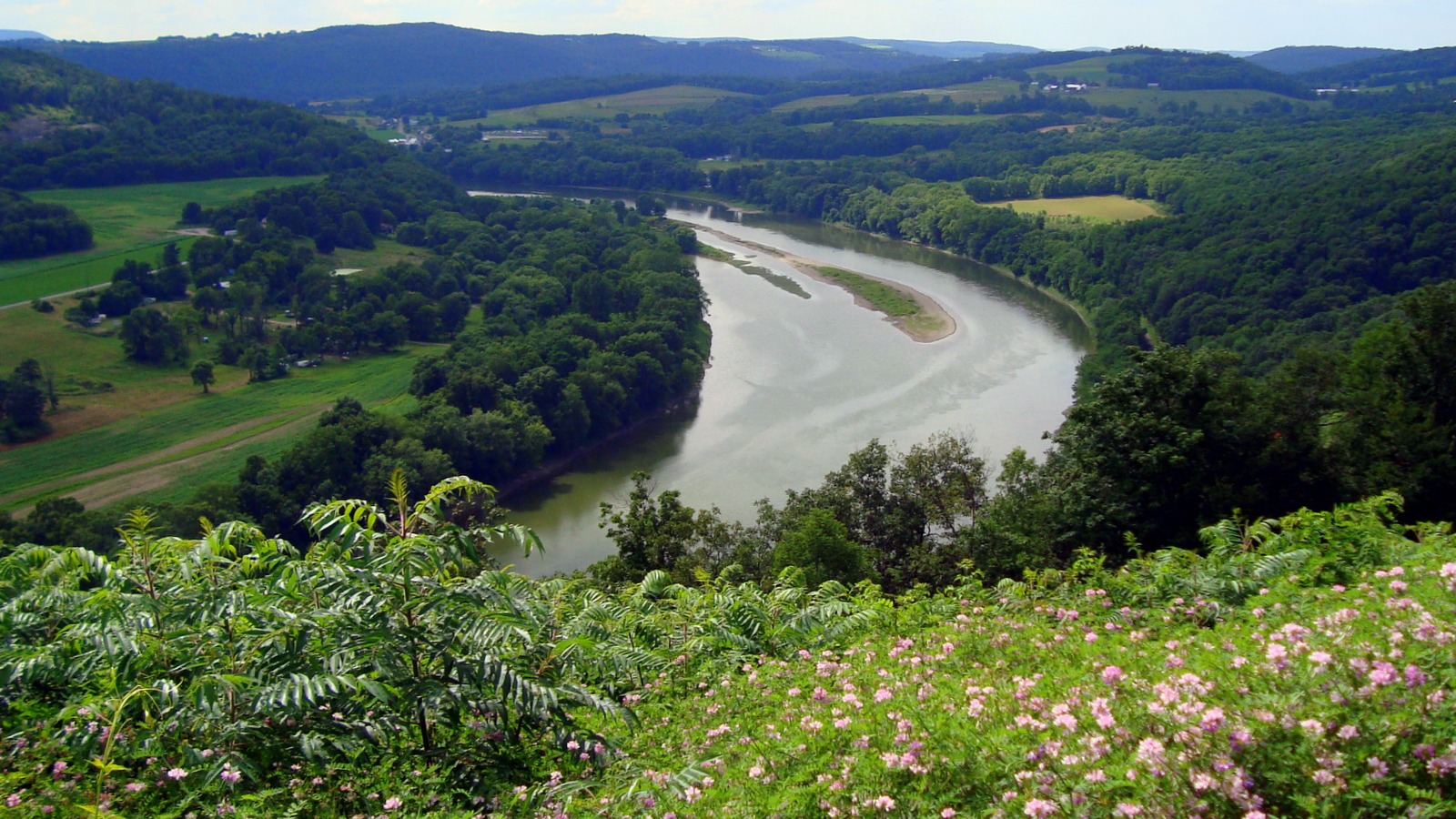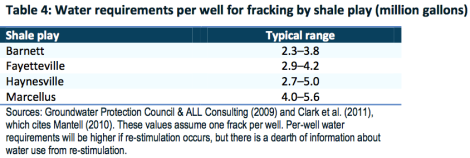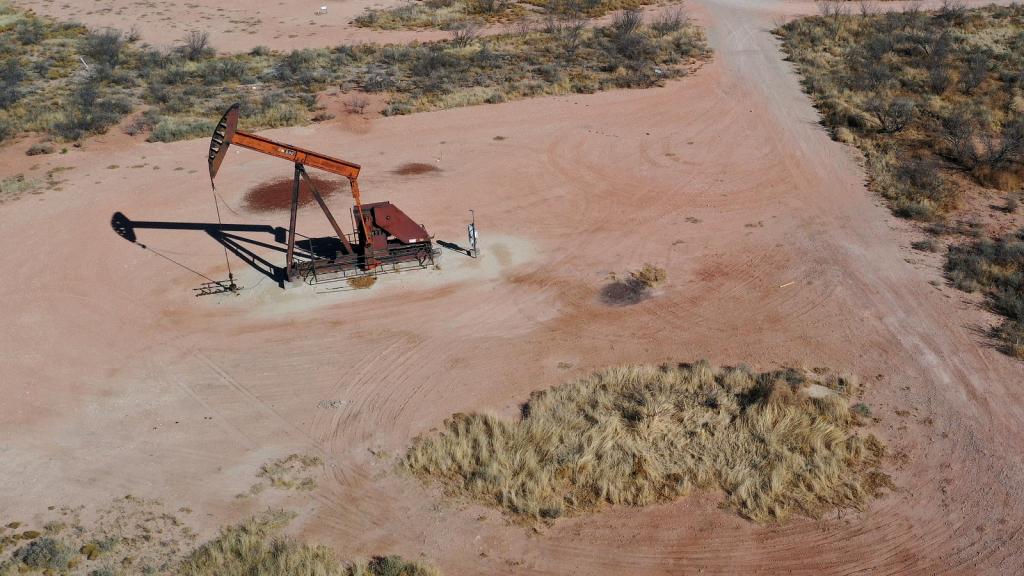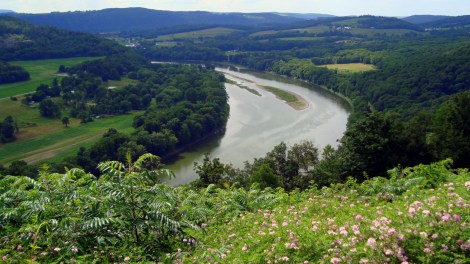
cotterpinFrackers are slurping this right up.
Forget about residents. Forget about fish. The streams and rivers of Pennsylvania and West Virginia are being heavily tapped to quench the growing thirst of the fracking industry.
According to a new report, each of the thousands of fracking wells drilled to draw gas and oil out of the Marcellus Shale formation in those two states uses an average of 4.1 to 5.6 million gallons of fresh water. That’s more than the amount of water used by fracking wells in three other big shale formations around the country:
And with approximately 6,000 wells in Pennsylvania alone, the industry is taking a heavy toll on the region’s waterways. The map below shows drilling permits in Pennsylvania and West Virginia; note the heavy concentration within the Susquehanna River basin.
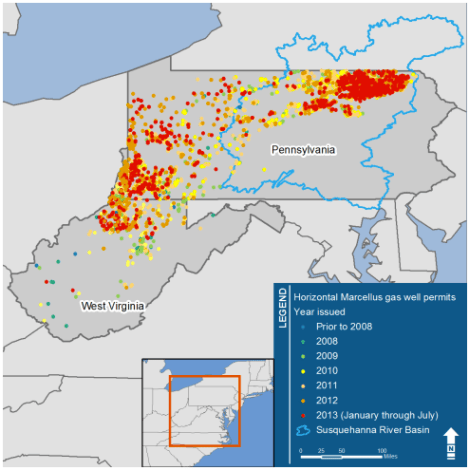
EarthworksClick to embiggen.
Much of the water is being skimmed off the tops of rivers and streams. In West Virginia, the researchers concluded that 80 percent comes from these surface waterways.
From the report [PDF], which was produced by researchers at San Jose State University and consulting firm Downstream Strategies for the environmental nonprofit Earthworks:
[T]he entire flow of the Susquehanna River contributes 26 billion gallons of water per day to the Chesapeake Bay. The cumulative volume of water used by all wells in Pennsylvania is roughly equal to the daily flow from the entire river basin. These cumulative impacts are especially important because such a large percentage of the water injected does not return to the surface and is lost to the hydrologic cycle. The volume of water injected to date in Pennsylvania is also roughly 1% of the 2.5 trillion gallons of total surface water in Pennsylvania alone. While overall, 1% might be seen as only a marginal impact, these volumes could be critical in times of drought. Also, as drilling expands, the cumulative impacts are likely to grow proportional to water use. The development of the deeper and thicker Utica Shale that underlies the Marcellus with similar techniques will require substantially more water.
The report notes that much of the data its researchers had sought was unavailable. Lax water-reporting rules mean the region is swimming in uncertainty over how much water is actually being used by Marcellus Shale frackers, and how much wastewater they’re dumping or injecting into disposal wells.
“Our analysis of available data and identification of missing data indicates that, even with new reporting requirements, we still don’t know the full scale of impacts on water resources,” researcher Dustin Mulvaney of San Jose University said. “States should require operators to track and report water and waste at every step, from well pad construction to fracturing to disposal.”

